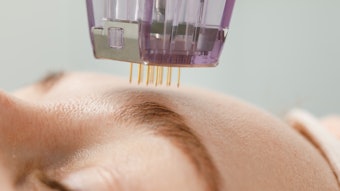
A paper published in Aging and Mechanisms of Disease explains that the discovery of reliable markers to detect senescent cells in human skin is key to understanding relationships between senescence and skin aging.
As such, the present authors evaluated the histone variant H2A.J as a new biomarker to detect senescent cells during human skin aging. Skin biopsies from healthy volunteers 18-90 years old were analyzed for its expression and other parameters involved in triggering or maintaining cellular senescence.
See related: Testing Tactics in Skin; Targeting Senescent Cells for Anti-aging
Results indicated that proportions of H2A.J-expressing keratinocytes increased from ~20% in young skin to ~60% in aged skin. Furthermore, quantification of integrin-α6+ basal cells suggested that the number and function of stem/progenitor cells decreased during aging and their altered proliferation capacities resulted in diminished tissue renewal with epidermal thinning.
Taken together, the results suggest that H2A.J is a sensitive marker that could be used to study epidermal aging in human skin.











